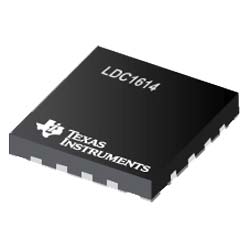Data de postagem: 2015-05-28
Texas Instruments (TI) has announced what it considers to be the world's first multi-channel inductor-to-digital converter (LDC). Four new devices in the LDC1614 family expand the innovative LDC product family, which was TI's first data converter category in 2013. These devices provide two or four matched channels and a resolution of up to 28 bits in a single integrated circuit (IC).
The combination of precision and multi-channel capabilities will enable engineers to design simpler system designs and reduce cost for high dynamic range position and motion sensing solutions. Unlike other technologies, LDC-based induction uses low-cost, high-reliability sensors as sensors, which can be placed away from the IC. By integrating up to four channels in a single IC, the LDC1614 family allows designers to distribute sensors across the system while focusing electronics on fewer printed circuit boards (PCBs). This can benefit from accurate linear or rotation sensing and metal detection in a variety of end devices including white goods, printers, cameras and automotive infotainment consoles.
Key advantages: 1-Multiple well-matched channels: Supports differential and proportional measurements, allowing designers to easily compensate for environmental and aging conditions such as temperature, humidity, and mechanical drift. 2-Accurate measurement function: The device has a resolution of up to 28 bits and can detect sub-micron distance changes. 3-Wide sensor frequency range: By supporting a frequency range from 1kHz to 10MHz, designers have the flexibility to use multiple types of inductors as sensors. This frequency range also allows the use of very small PCB coils, reducing the cost and size of the overall sensing solution. 4-Low system power consumption: The LDC1614 series is powered by a 3.3V power supply, which consumes approximately 6.9mW during standard operation and approximately 0.12mW in shutdown mode. 5-High reliability: The
LDC1614EVM evaluation kit includes an ultra-low-power MSP430F5528 microcontroller (MCU) that can be used to evaluate the LDC1614.
System designers can use TI's WEBENCH inductive inductive designer to build sensors in minutes. This online tool simplifies the design of sensor coils based on application and system requirements. Optimized designs can be easily exported to various computer-aided design (CAD) programs to quickly integrate sensor coils into the overall system layout.
The 16-button keyboard reference design (TIDA-00509) uses LDC1314 in a multi-sensing keyboard system, which can be easily expanded to accommodate up to 64 buttons. This reference design uses stainless steel, shrapnel-based keys, a low-cost option for button technology. Compared to mechanical keyboard solutions, this contactless solution supports simultaneous button presses and provides a more stable and reliable design. The company said that other inductive sensing reference designs can be obtained by searching the TI Designs reference design library.
